Species at Risk Program Status (2008-2015)
Read an excerpt from the Five-Year Review of Progress Towards the Protection and Recovery of Species at Risk (2015). The excerpt summarizes our efforts to support species at risk in Ontario under the Endangered Species Act, 2007.
Five-year review of progress towards the protection and recovery of species at risk in Ontario – 2015
1. Overview
The Endangered Species Act, 2007 (ESA or “the Act”) is the Government of Ontario’s legislative commitment to protecting and recovering the province’s most vulnerable species and their habitats. Through the Species at Risk Program, the Ministry of Natural Resources and Forestry (MNRF or “the Ministry”) provides leadership and support in implementing the ESA and other tools that contribute to the protection and recovery of species at risk and their habitats. Collectively, these initiatives aim to protect species at risk and their habitats, promote the recovery of species, and promote stewardship activities to assist species at risk in Ontario.
Under the Act, the Minister of Natural Resources and Forestry (“the Minister”) is required to conduct a review of progress towards the protection and recovery of species at risk. The review must be conducted not later than five years after the actions that the Government of Ontario identifies to protect and recover a species at risk have been published in a government response statement.
This document describes the government’s commitments and efforts to support Ontario’s species at risk, and reports on progress toward the protection and recovery of the 13 species whose government response statements were finalized in 2010. Supporting information about the legislative requirements and relevant policies and procedures that help to protect and recover species at risk in Ontario are provided in sections 2 to 4 of this chapter.
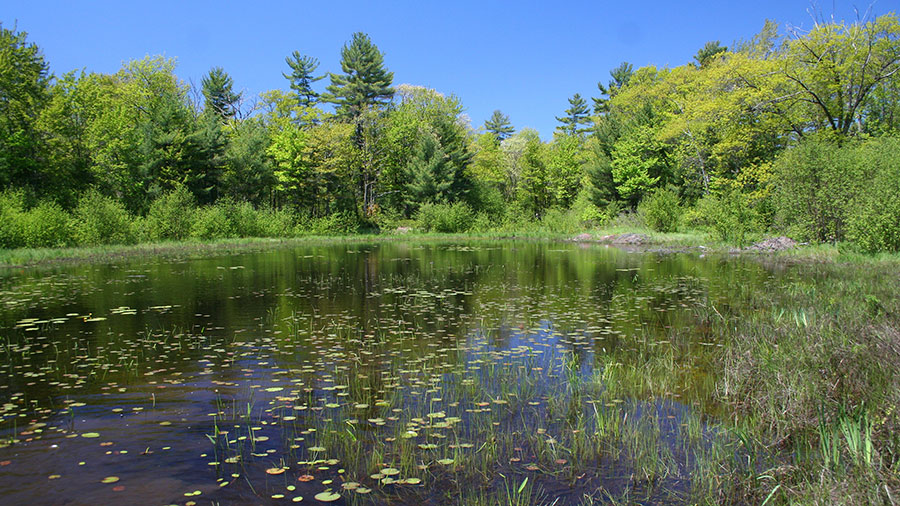
2. Government Efforts to Support the Protection and Recovery of Ontario’s Species at Risk
2.1 Species Assessments and Reassessments
The government supports an independent body of experts called the Committee on the Status of Species at Risk in Ontario (COSSARO) to assess and re-assess species that may be at risk or declining. COSSARO uses the best available scientific information, including community knowledge and Aboriginal traditional knowledge, to determine which plants and animals are “at risk” in Ontario.
The ESA requires that species designated as extirpated, endangered, threatened or special concern be listed in regulation under the Act within three months of COSSARO delivering an assessment report to the Minister. The list is called the Species at Risk in Ontario (SARO) List and is filed under Ontario Regulation 230/08. Under the previous Endangered Species Act, the Minister had discretion as to which species were listed, but the current legislation requires that all species designations by COSSARO be automatically added to the SARO List. All species listed as endangered or threatened on the SARO List automatically receive both species and habitat protection under the Act.
Including the results of the Committee on the Status of Species at Risk in Ontario’s most recent report to the Minister (December 2014), there are currently 104 endangered, 57 threatened, 50 special concern and 15 extirpated species on the Species at Risk in Ontario List.
COSSARO uses a prioritized list to publicly communicate its upcoming species assessments. Priority species for assessment by COSSARO typically include any Ontario species that have recently been assessed by its national counterpart, the Committee on the Status of Endangered Wildlife in Canada (COSEWIC), and any other Ontario species that may be experiencing significant declines. COSSARO may, at any time, re-assess any species currently listed on the SARO List as new information becomes available to determine if the species status has changed. As COSEWIC re-assesses federally listed species at risk every 10 years (or earlier if warranted), COSSARO also re-assesses provincially listed species approximately every 10 years.
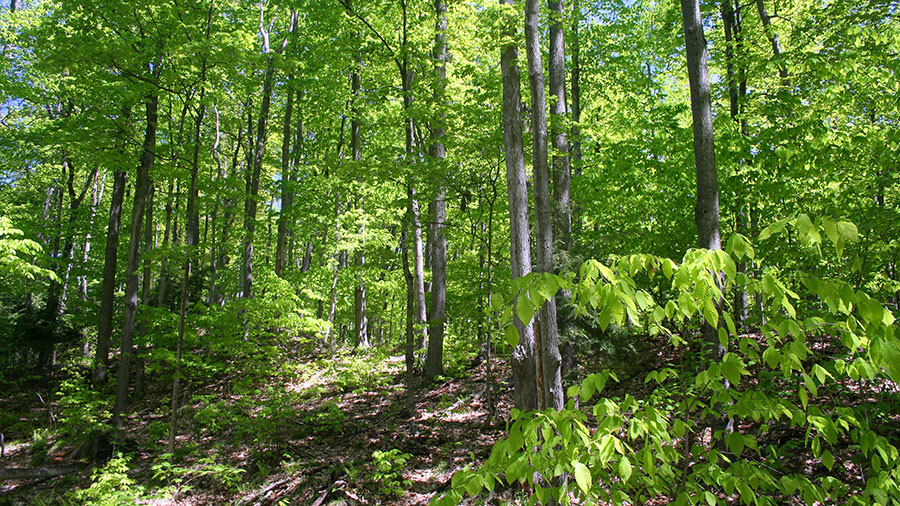
2.2 Maintaining the Provincial Record of Species at Risk
Making an informed decision during the species assessment (or re-assessment) process requires high quality and reliable data and information. The Ministry’s Natural Heritage Information Centre (NHIC) tracks Ontario’s species at risk through collecting, reviewing and managing species-specific information in a comprehensive provincial database. A large network of partners all across Ontario send species observations to the NHIC for safe-keeping and to add to the provincial record, which is used extensively by governments, municipalities, researchers, local stewardship groups and others for natural heritage systems planning and to help protect and study Ontario’s natural heritage.
The provincial database (referred to as Land Information Ontario, or “LIO”) contains over 156,000 observations and information on over 26,000 occurrences of species at risk in Ontario. The Ministry encourages everyone to submit observations of species at risk to the NHIC for incorporation into the provincial record of observations.
2.3 Species and Habitat Protection
The Act provides protection for individual members of species at risk and their habitats. It protects Ontario’s most vulnerable species from being killed, harmed, harassed, captured or taken. Individuals of endangered, threatened or extirpated species receive these protections (referred to as “species protection”) automatically when they are listed on the SARO List. This is commonly referred to as “species protection” and, along with the provision for habitat protection, is one of the key sections of the Act (see section 9 of the ESA). Under the previous Endangered Species Act, only the 42 species that were declared in regulation to be threatened with extinction received species and habitat protection.
Today, species protection is provided to all 176 endangered, threatened and extirpated species listed on the Species at Risk in Ontario List.
The Act automatically protects the habitat of all species listed as endangered or threatened on the SARO List from being damaged or destroyed. This is commonly referred to as “habitat protection” and, along with the species protection provision discussed above, is one of the key sections of the Act (see section 10 of the ESA). Habitat, as defined in the Act, includes areas on which a species depends, directly or indirectly to carry on its life processes. To provide additional direction on exactly what areas are protected as habitat under the Act, the Ministry develops species-specific habitat guidance (e.g., general habitat descriptions and habitat regulations).
Habitat protection is currently afforded to all 161 endangered and threatened species listed on the Species at Risk in Ontario List. To provide enhanced clarity on what areas are protected as habitat under the Endangered Species Act, 2007, the government has to date developed 32 habitat regulations and 15 general habitat descriptions, providing species-specific direction for nearly 1/3rd of the species that receive ESA habitat protection.
Not every activity that occurs within or near protected habitat will kill, harm or harass a species at risk or damage or destroy its habitat. In fact, many day-to-day activities can take place without adversely affecting a protected species or its habitat. If the activity will not contravene the Act, it can proceed without an ESA authorization and without the need to follow the requirements of a regulatory provision. If impacts to a species at risk cannot be avoided, the activity will require an authorization (e.g., permit) or, if eligible, may follow the requirements of a regulatory provision. ESA authorizations and regulatory provisions may allow activities that would otherwise be prohibited under the Act to occur if certain requirements can be met, such as minimizing adverse effects on the species and providing an “overall benefit” for the species. These provisions help to reduce the impacts of human activity on species at risk and their habitat while balancing social and economic considerations.
2.4 Recovery Strategies and Management Plans
The Ministry coordinates the preparation of species-specific recovery strategies for species listed as endangered or threatened and management plans for species listed as special concern. These documents are prepared for government by external experts using the best available scientific knowledge to provide advice on recommended approaches to recovering species listed as endangered or threatened. In the case of a special concern species, the advice to government is intended to prevent the species from becoming endangered or threatened. Recovery strategies and management plans were not required under the previous Endangered Species Act.
Upon listing of species as endangered or threatened on the SARO List, recovery strategies are required within one year for endangered species and two years for threatened species. Similarly, once a species is listed as special concern, a management plan is required to be prepared for the species within five years, unless a recovery strategy or management plan is prepared for the species under the federal Species at Risk Act. Recovery strategies for endangered or threatened species that were listed at the time the Act came into force (i.e., “transition species”, which is a species listed under schedule 1, 3 or 4 of the ESA) were not due until 2013.
Since 2008, the Government of Ontario has successfully completed development of recovery strategies for 100 species at risk. Sixty of the published recovery strategies are for species that were listed at the time the Endangered Species Act, 2007 (ESA) came into effect (i.e., transition species) and 40 are for species newly-listed since 2008. Progress is also being made toward the development of recovery strategies for an additional 62 endangered and threatened species in accordance with provisions of the ESA. To support timely and efficient development of these strategies, the Government of Ontario is cooperating with federal agencies on the development of approximately half of these strategies and strategically prioritizing development of recovery strategies for the remaining species.
The Government of Ontario has also developed management plans for 10 special concern species since 2008, with management plans for four still required. These management plans will be prepared under the federal Species at Risk Act if the species are listed federally and their management plans can be completed prior to when they are due under the ESA. Management plans are not required for 35 special concern species currently on the Species at Risk in Ontario List, as a recovery strategy or management plan will be prepared for these species under the federal Species at Risk Act.
In some circumstances, publication of recovery strategies and management plans can occur outside of the above-mentioned timelines. Publication may be delayed in cases where the Minister is of the opinion that additional time is required to prepare a recovery strategy or management plan because of 1) the complexities of the issues, 2) the desire to prepare the recovery strategy/management plan with one or more other jurisdictions, or 3) the desire to give priority to the preparation of recovery strategies or management plans for other species. Taking additional time to prepare a recovery strategy or management plan helps the Ministry to consider the needs of all species at risk and develop the best quality products for their protection and recovery.
Although not required under the Endangered Species Act, 2007 (ESA), some special concern species have recovery strategies. For example, a recovery strategy was prepared for Peregrine Falcon when it was listed as a threatened species on the Species at Risk in Ontario List. Since that time, it has been re-classified as a special concern species and therefore a recovery strategy is no longer required under the ESA. The existing recovery strategy serves as the management plan for the species.
In another example, to support efficiencies, the components of a management plan for the special concern Common Five-lined Skink (Southern Shield population) were incorporated into the recovery strategy that was required for the endangered Common Five-lined Skink (Carolinian population). This recovery strategy provides advice and information on both populations.

Recovery strategies and management plans outline the biology and habitat needs of the species, threats to the species’ survival and recovery, recommendations on protection and recovery objectives for the species (for recovery strategies), recommendations on management objectives for the species (for management plans), and approaches for achieving those objectives. In addition, recovery strategies provide recommendations on the areas of habitat that the government should consider in developing a habitat regulation for the species.
2.5 Government Response Statements
The Ministry develops government response statements (GRS) to identify and communicate how the Government of Ontario will support the recovery of each species at risk. These statements are the government’s policy response to the scientific advice provided in the recovery strategy or management plan, and are completed within nine months of a recovery strategy or management plan being finalized. Government response statements include the government’s recovery goal for the species and the actions it intends to lead or support to help achieve that goal. Under the previous Endangered Species Act, the government was not required to publicly state the actions that it would lead or support in the protection and recovery of species at risk.
To date, the government has published government response statements for 91 endangered, threatened and special concern species currently listed on the Species at Risk in Ontario List.
Government response statements are based on the information in the recovery strategy and input from stakeholders, other jurisdictions, Aboriginal communities and members of the public. They reflect the best available traditional, local, and scientific knowledge, and may be adapted if new information becomes available. When identifying protection and recovery actions in a government response statement, the Ministry also considers what is feasible, taking into account social and economic factors.
Common actions for the government to lead as it works toward achieving a species’ recovery goal include:
- Educating others on the legal requirements to protect the species and its habitat;
- Encouraging individuals to submit observations of the species to the Natural Heritage Information Centre (the provincial repository for species at risk observations);
- Undertaking communications and outreach to increase public awareness of species at risk in Ontario;
- Protecting individual members of the species and their habitat through the ESA;
- Supporting others (e.g., through funding or by prescribing conditions on ESA authorizations that align with the GRS) to take actions to help protect and recover the species; and
- Establishing and communicating annual priority actions for government support in the annual Species at Risk Stewardship Fund call for proposals to encourage collaboration and reduce duplication of efforts.
Common actions for the government to support include:
- Research and monitoring to increase knowledge of species population trends, biology, habitat and threats;
- Education and outreach to increase public awareness about threats to a species and its habitat; and
- Engaging others in species protection and habitat management actions.
Schematic of the protection and recovery process under the Endangered Species Act, 2007
COSSARO – Committee on the Status of Species at Risk in Ontario
SARO List – Species at Risk in Ontario List
*Five-year reviews are required for endangered and threatened species, and occur within five-years of publishing the government response statement.
2.6 Reviewing Progress on the Protection and Recovery of Species at Risk
Under section 11(11) of the Act, the Minister is required to ensure that a review of progress towards the protection and recovery of a species is conducted not later than five years from the publication of the government response statement for that species.
The review provides an opportunity for the government to report on its progress in supporting the protection and recovery of a species, which includes a review of the progress on implementing actions within the government response statement for the species. In doing so, the review may help to identify implementation gaps and areas where adjustments may be required to help ensure recovery of the species. The 13 species at risk reviewed in this document had government response statements finalized in 2010 and are: American Badger, Barn Owl, Deerberry, Eastern Flowering Dogwood, Eastern Prairie Fringed-orchid, Engelmann’s Quillwort, Few-flowered Club-rush, Jefferson Salamander, Ogden’s Pondweed, Peregrine Falcon, Reside Dace, Spotted Wintergreen and Wood Turtle.
The first review on the government’s progress toward the protection and recovery of a species was published in 2014 – the State of the Woodland Caribou Resource Report.

The five-year reviews of progress contained in this report examine projects and activities related to the 13 species at risk that were undertaken mainly between 2007 and 2014. The reviews are primarily informed by the assessment of data on projects and activities for which the Ministry has consistent and comprehensive access. This includes, but is not limited to: projects undertaken by recipients of the Species at Risk Stewardship Fund and the Species at Risk Research Fund for Ontario; activities for which an ESA authorization has been issued or activities that have been registered under Ontario Regulation 242/08; MNRF enforcement activities; and, NHIC data about the species. It is important to acknowledge that many agencies, organizations, communities and individuals may be engaged in stewardship activities that are not communicated to the Ministry, and thus, the contributions of these activities toward species’ protection and recovery were not incorporated into this review. Additional protection and recovery actions may contribute to the achievement of the recovery goal for the species, but the scope of this review is focused on those actions for which the Ministry has direct access to data and information.
It is helpful to note two challenges in conducting a five-year review of progress, the first of which is the relatively short timeframe that is subject to review. Biological restoration is not a quick process. Protection and recovery actions generally require a timeframe much longer than five years (e.g., multiple decades for the Peregrine Falcon) for the effects on a species to be measurable. The second challenge is that effectiveness monitoring varies across projects and the variability in the types of activities undertaken often make it difficult to draw broader conclusions from the available data to interpret the effects of protection and recovery efforts on a species and its habitat.
Nevertheless, a key benefit of conducting a review of progress after five years of GRS implementation is that the recommendations provided for each of the species reviewed will be available to help support and inform future decisions regarding the protection and recovery of the species.
2.7 Research and Monitoring
The Ministry conducts research and monitoring on aquatic and terrestrial species at risk in Ontario to inform policy and resource management decision-making. Information about the results of research and monitoring activities that have been led or supported by the Ministry has informed the five-year review of progress for the species featured in this document. Examples of recent aquatic research and monitoring projects include testing the effectiveness of environmental DNA detection for monitoring the distribution of Redside Dace and studying the habitat requirements of Channel Darter to help develop recommendations for the amount of water flow that the species requires during its spawning period. Recent terrestrial research has focussed on studying areas that are habitat to a variety of species at risk to learn more about their distribution, movement and breeding patterns. Some of the associated findings include the discovery that Common Five-lined Skinks from northern populations move among isolated patches of habitat and use the forested areas between rock barrens (previously thought inhospitable) during dispersal.
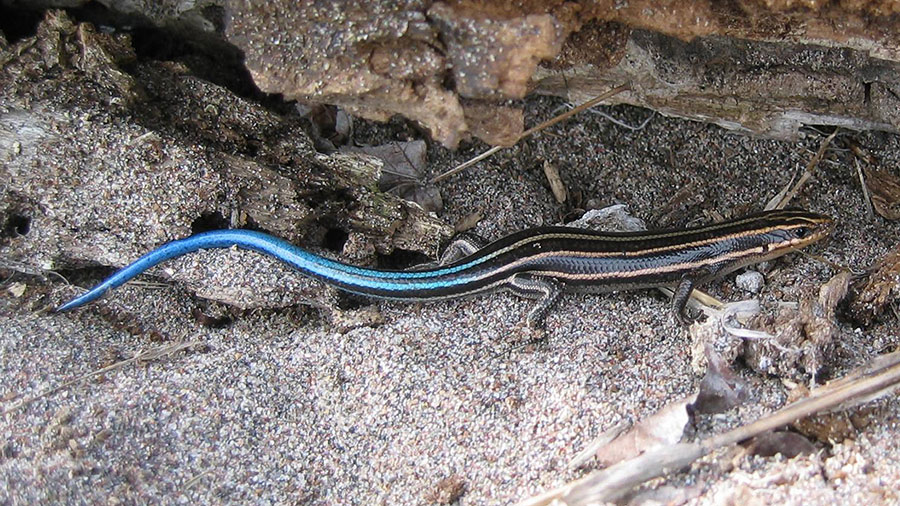
2.8 Compliance and Enforcement
The Ministry is responsible for administering and enforcing the ESA and its regulations. Compliance monitoring and enforcement are critical to successful implementation of the Act, which is a government-led action that is common to all government response statements. Ministry enforcement officers undertake a variety of activities to ensure compliance with Ontario’s natural resource laws. The Act sets out specific actions that enforcement officers are authorized to undertake in response to observed or suspected non-compliance. The Ministry emphasizes the importance of education for supporting compliance by ensuring that individuals and organizations understand their obligations under the legislation and associated regulations.
Between 2008, when the Endangered Species Act, 2007 came into force, and February 1, 2014, there were 23 convictions under the Act resulting in fines ranging from $300 to $20,000 and jail time up to 90 days. In addition, as of February 1, 2014, approximately 61 charges were before the court and enforcement officers had issued more than 10 stop work orders to individuals who were carrying out, or were about to carry out, an activity that was likely to contravene the species or habitat protection provisions of the Act.
The Ministry encourages everyone to report illegal activities against Ontario’s species at risk, fish and wildlife, shore lands, forests, provincial parks and conservation reserves, petroleum, aggregate resources and public lands. In the context of species at risk, illegal activities include:
- Killing, harming, harassing, capturing or taking a species at risk without appropriate authorization;
- Possessing, transporting, collecting, buying, selling, leasing or trading a species at risk without appropriate authorization;
- Damaging or destroying the habitat of a species at risk without appropriate authorization; or
- Not complying with the conditions of an authorization.
Illegal activities can be reported to
Ministry ofNatural Resources and Forestry
1-877-TIPS-MNR
1-877-847-7667
Crime Stoppers (anonymous)
1-800-222-TIPS (8477)
1-877-TIPS-MNR is not an emergency response number.
If your call is about a matter of public safety, please call 911 or the police.
3. Working with Others
Protecting and recovering species at risk is a shared responsibility. No single agency or organization has the knowledge, authority or financial resources to individually protect and recover all of Ontario’s species at risk. Successful protection and recovery requires the collective involvement of many individuals, organizations and communities. Below are some of the ways that the provincial government supports and works with others to help protect and recover Ontario’s species at risk.
3.1 Supporting Public Participation in Species at Risk Stewardship Activities
The Ministry promotes and supports strong public participation in the stewardship of species at risk through the Species at Risk Stewardship Program. This program provides financial support to enable individuals and organizations to get involved in protecting and recovering Ontario’s species at risk. Since its establishment in 2007, the Species at Risk Stewardship Program has supported over 2,420 projects, including: habitat restoration and enhancement initiatives; management actions that reduce threats to species; species-specific research; surveys and inventories; and education and outreach activities.
Since the Species at Risk Stewardship Program was established, Ontario has provided funding to over 2,420 projects that have supported the protection and recovery of the province’s species at risk. Ontario’s stewardship partners reported that the Ministry’s support helped them to involve 24,300 individuals who volunteered 50,750 hours of their time toward the projects, which contributed to the restoration of over 10,000 hectares of habitat. In total, stewardship partners identified that over one million people have been reached through education and outreach activities.
The Species at Risk Stewardship Program is comprised of three smaller programs: the Species at Risk Stewardship Fund, the Species at Risk Research Fund for Ontario, and the Species at Risk Farm Incentive Program. Each year, the Ministry determines the types of projects that will be given priority for funding under the Species at Risk Stewardship Fund and Species at Risk Research Fund for Ontario. The Ministry communicates this information in the fall through its call for project proposals, which is announced on the Species at Risk Stewardship Fund website and through notification letters sent to Aboriginal communities and organizations, conservation authorities, academic institutions, non-government organizations, citizens, and municipal governments, among others. The Species at Risk Farm Incentive Program is funded by the Ministry and administered by the Ontario Soil and Crop Improvement Association. The program provides a variety of funding levels to eligible projects that are designed to help protect and recover species at risk on privately-owned Ontario farms.
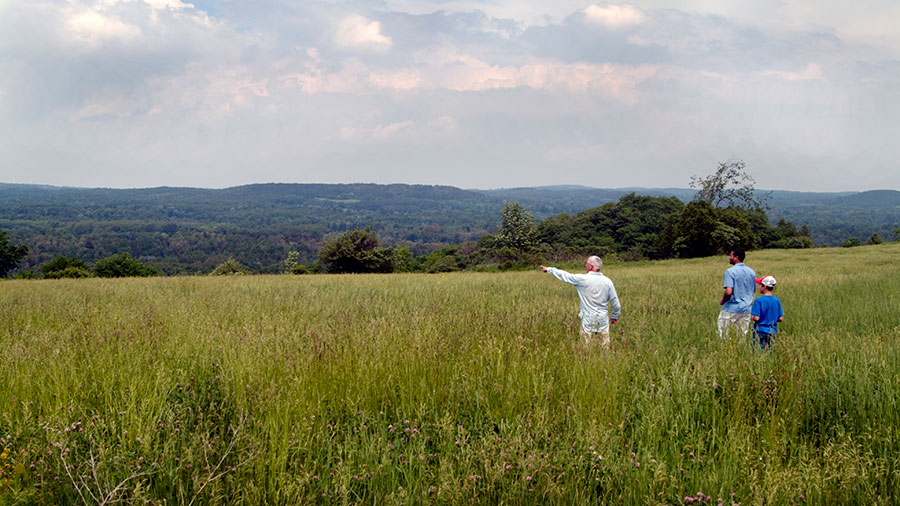
3.2 Supporting Public Engagement
The Ministry recognizes that public engagement is critical to informing the development of comprehensive and robust ESA policies, permits, government response statements, recovery strategies, management plans and habitat regulations. Accordingly, the Ministry regularly posts draft versions of these documents on Ontario’s Environmental Registry for all interested individuals, stakeholders, and Aboriginal communities to comment upon, as well as to seek additional scientific information, community knowledge, and Aboriginal traditional knowledge. The Ministry considers all comments received when finalizing each document.
The Ministry is committed to meeting its constitutional obligations with respect to Aboriginal peoples in implementing the Act, and to working collaboratively towards the protection and recovery of species at risk. The Ministry’s approach to engagement with Aboriginal communities and organizations is dependent on the species and the type of document being developed.
The Ministry also seeks advice on the protection and recovery of species at risk from various advisory groups. For example, under the Act the Minister established the Species at Risk Program Advisory Committee, which is comprised of a broad group of members with expertise in resource use, land use, and the protection and recovery of species at risk. This committee makes recommendations to the Minister on matters relating to species at risk in Ontario. Other advisory groups have been established to provide advice on specific species at risk, and include groups such as the Provincial Caribou Technical Committee and the Bobolink and Eastern Meadowlark Round Table.
3.3 Working with Other Areas of Government
Ontario is a signatory to the Accord for the Protection of Species at Risk in Canada. This agreement acknowledges Ontario’s commitment to working together with other provinces and the federal government to provide legal protection to endangered and threatened species and their habitats. The signing of the Canada-Ontario Agreement on Species at Risk in 2011 further confirmed Ontario’s commitment to working collaboratively with the federal government and other jurisdictions to protect and recover species at risk.
Ministry staff participate in multi-lateral and bi-lateral working groups to meet these commitments by working cooperatively with other provinces, territories, and the federal government. This includes sharing information and best practices, providing advice on how to increase consistency in policy approaches, and coordinating work planning. These working groups focus on topics related to recovery planning, habitat policy, permitting, funding and consultation. Where possible, the Ministry works cooperatively with the federal government in the development and review of status reports, recovery strategies, management plans, government response statements, and habitat direction for species at risk. The Ministry has also achieved great efficiencies through the development of a process with the federal government that allows each agency to adopt recovery documents that have been prepared by the other agency, in order to meet their respective legislative requirements.
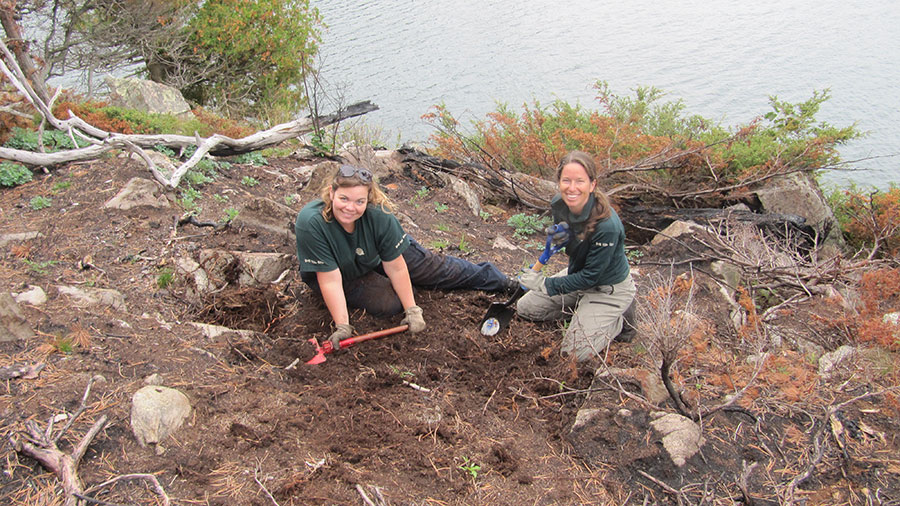
The Ministry also supports inter-jurisdictional cooperation on species at risk through initiatives such as the Canadian Wildlife Directors Committee, which includes federal, provincial and territorial representatives that provide leadership in the development and coordination of policies and programs on species at risk. Another example is the Ontario Species at Risk Working Group, through which management from the Ministry and federal government departments work cooperatively to support the coordination of programs and activities related to the protection and recovery of species at risk in Ontario. Within the province, MNRF works with the Endangered Species Act Inter-Ministerial Committee to engage other ministries on the development and implementation of species at risk policies and programs.
In addition to the formal working groups described above, MNRF also frequently works with other provincial ministries, levels of government and planning authorities to educate them on the requirements of the ESA. For example, Ministry staff correspond and meet with partners, such as municipalities and conservation authorities, to provide guidance on how best to consider the biological requirements of species at risk in the planning stage of activities, and to answer questions about ESA policies and legislation.
3.4 Supporting Efforts to Avoid Adverse Effects
The Ministry and proponents regularly work together to identify ways for proposed activities to proceed in manners that avoid adverse effects to species at risk and their habitat. For this reason, the Ministry strongly encourages proponents to contact their local MNRF office as early as possible when planning and designing a proposed activity. Ministry staff may be able to help proponents to identify alternatives that would avoid adverse effects on species at risk and their habitat, and thus eliminate the need for an ESA authorization or use of a regulatory provision. Avoidance alternatives may include, but are not limited to:
- Conducting the activity in an alternate location away from any protected species or habitat;
- Using alternative methods, equipment and technical designs for carrying out the activity that do not adversely affect any protected species or their habitat; and
- Adjusting the timelines for carrying out all or parts of an activity to avoid periods when protected species are present or are sensitive to disturbance.

3.5 Supporting Efforts to Minimize Adverse Effects
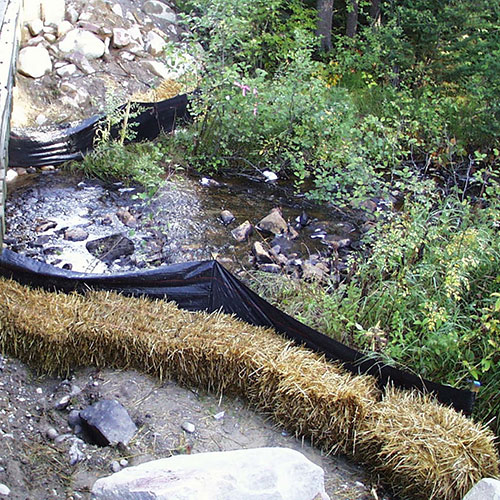
As noted above, the Ministry primarily encourages people to carry out their activities in ways that will avoid any adverse effects on a species at risk or its habitat. If avoidance is not possible, the ESA and Ontario Regulation 242/08 include provisions to allow individuals to engage in an activity that would otherwise be prohibited by the Act if specific legislative and regulatory requirements are met. Provisions in the Act enable the Minister to issue permits and enter into agreements to authorize activities that would otherwise be prohibited, and the regulation sets out conditional exemptions from prohibitions under the ESA for eligible activities.
ESA authorizations and regulatory provisions include conditions that proponents are responsible for fulfilling to minimize adverse effects on individual members of species at risk and their habitat. These conditions may include, but are not limited to, restrictions regarding the:
- Location or timing of the activity;
- Duration and frequency of adverse effects on protected species or habitat; and
- Design or operation of the activity.
The following are examples of conditions that the Ministry has included within previously issued permits in order to minimize adverse effects. These conditions required the permit holder to:
- Fence and mark off-site Butternut trees during construction to avoid harming retainable trees on adjacent lots;
- Restrict activities to occur after Chimney Swifts have migrated south in the fall and before they return in the spring; and
- Restrict in-water works to avoid the fisheries timing window for Black Redhorse from April 1 until June 30.
3.6 Supporting Efforts to Create an Overall Benefit for Species at Risk
The Minister may issue an “overall benefit permit” (i.e. , 17(2)(c) permit) to authorize a proponent to carry out an activity that would otherwise contravene the Act as long as all conditions of the permit are satisfied. This includes the Minister being of the opinion that an overall benefit to the species (that is named in the permit) will be achieved within a reasonable time. The Minister must also be of the opinion that reasonable alternatives have been considered (and the best alternative has been adopted) and that reasonable steps to minimize adverse effects are required by the permit. For example, the conditions related to overall benefit may require the permit holder to:
- Restore or enhance habitat areas;
- Reduce threats that impact the species’ population; or
- Remove barriers that limit distribution of the species within its natural range.
Examples of conditions that the Ministry has included within previously issued permits in order to achieve an overall benefit to the species have required the permit holder to:
- Plant, tend and monitor prescribed numbers of Butternut seedlings and companion trees (native deciduous and coniferous species) within a minimum number of hectares of suitable Butternut habitat to emulate natural Butternut habitat conditions and avoid a monoculture of disease-prone trees;
- Restore a chimney (larger than the one to be removed) at a nearby heritage site, as enhanced Chimney Swift habitat that will accommodate a much larger population of Chimney Swifts; and
- Construct a prescribed number of fish habitat structures that will augment habitat function for Black Redhorse, and reduce the amount of silt entering the river to enhance habitat by improving water quality and reducing stress factors.
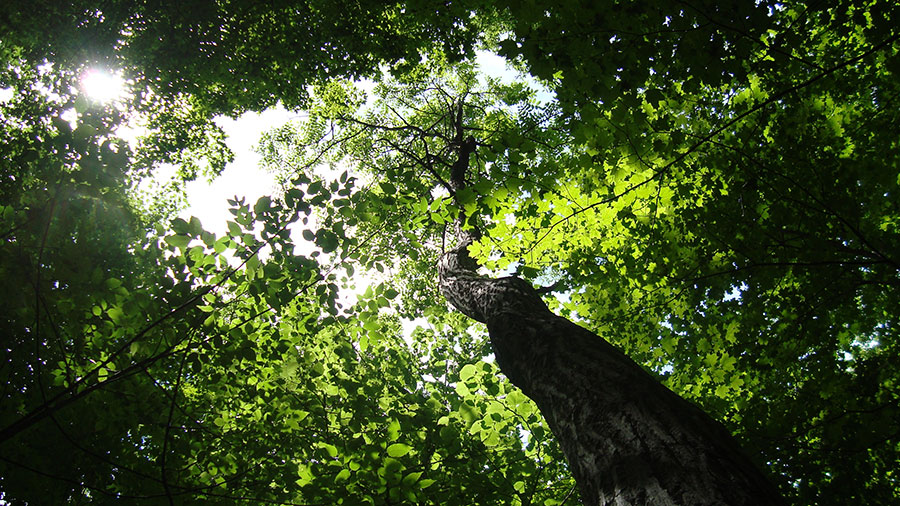
4. Policies and resources regarding species at risk
4.1 Species and Habitat Protection Policies
In 2012, the government published a policy to guide consistent implementation of the Act’s habitat protection provision. The policy, entitled Categorizing and Protecting Habitat under the Endangered Species Act, is used by Ministry staff and proponents to assess whether a proposed activity is likely to damage or destroy the habitat of an endangered or threatened species. The policy recognizes that some areas of habitat are more sensitive to disturbance than others, and includes a framework for categorizing the different areas of a species’ habitat based on how much alteration can occur in that area before its usefulness to the species becomes impaired or eliminated. To determine whether an activity is likely to damage or destroy habitat, the details of the activity must be examined, including the categories of habitat that may be affected by the activity and how the activity may affect the species’ ability to use its habitat.
In 2014, the government published a policy to guide consistent implementation of the Act’s species protection provision. Policy Guidance on Harm and Harass under the Endangered Species Act is used by Ministry staff and proponents to assess whether a proposed activity is likely to kill, harm or harass a member of a protected species. It clarifies that making this determination is generally done on a case-by-case basis and requires consideration of the details of the proposed activity, the biology and behaviour of the species, and how the activity may affect the species’ ability to carry out its life processes.
4.2 Permitting Policies
In 2012, the Ministry finalized Endangered Species Act Submission Standards for Activity Review and 17(2)(c) Overall Benefit Permits, which provides a policy explanation of the term “overall benefit” and guiding principles for the evaluation of overall benefit actions and permits. The Ministry has also published resources to help guide proponents through the first three phases of the application process for an overall benefit permit.

4.3 Species at Risk Reference Guides and Resources
The Ministry provides over 250 guides and resources on its website to offer the public, stakeholders, industries, governments and others information on the biological and habitat requirements of each species at risk in Ontario, as well as guidance on how to avoid or minimize adverse effects on these species and their habitats. Information sources include both species-specific and general policies, guidance, and best management practices such as:
- Links to recovery strategies, management plans, government response statements, general habitat descriptions and habitat regulations;
- Policies to assess whether an activity is likely to damage or destroy the habitat of a protected species, or result in the killing, harming or harassment of a protected species;
- Policies on how to apply for an overall benefit permit under the ESA;
- Guidelines for reducing the impacts of windpower facilities on bats and birds;
- Guidelines for reducing erosion and sedimentation near aquatic areas;
- Protocols for the detection and relocation of mussel species at risk in Ontario;
- Best management practices for the use of reptile and exclusion fencing;
- General information about bats in Ontario;
- Best management practices for mineral exploration and development activities, renewable energy, infrastructure and transmission activities, and tourism activities to avoid negative impacts on Woodland Caribou and its habitat; and
- Manuals for handling species at risk for clients with ESA authorizations.
In addition to the numerous resources included in the electronic library of guides and resources, the Ministry has created and maintains the Government of Ontario’s species at risk website. The Ministry has also provided a variety of species at risk communications and outreach support products to partners including stickers and colouring books for children, fact sheets highlighting the different species at risk found in specific areas, and posters providing information on the habitat and biological characteristics of featured species, as well as suggestions for protection and recovery actions for individual species at risk.
4.4 Policy Harmonization
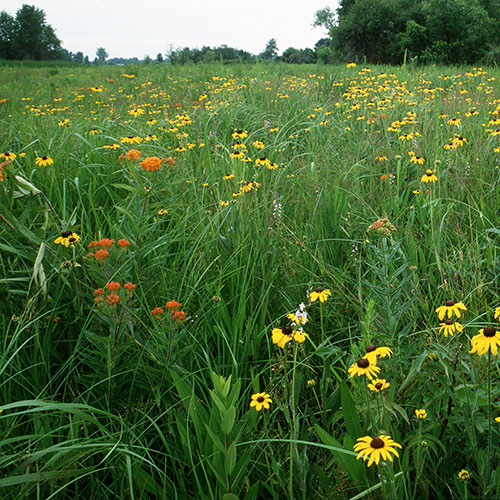
Ministry staff work regularly with internal and external partners to develop and revise policies that involve species at risk to help ensure a consistent and coordinated approach for protecting these species across Ontario. For example, in 2014 the Provincial Policy Statement (PPS) was harmonized with the ESA to clarify that development and site alteration in the habitat of endangered and threatened species are not permitted under the PPS, except in accordance with the ESA and federal requirements. As well, the PPS now aligns with the terminology used in the ESA (e.g., the definition of “habitat”).